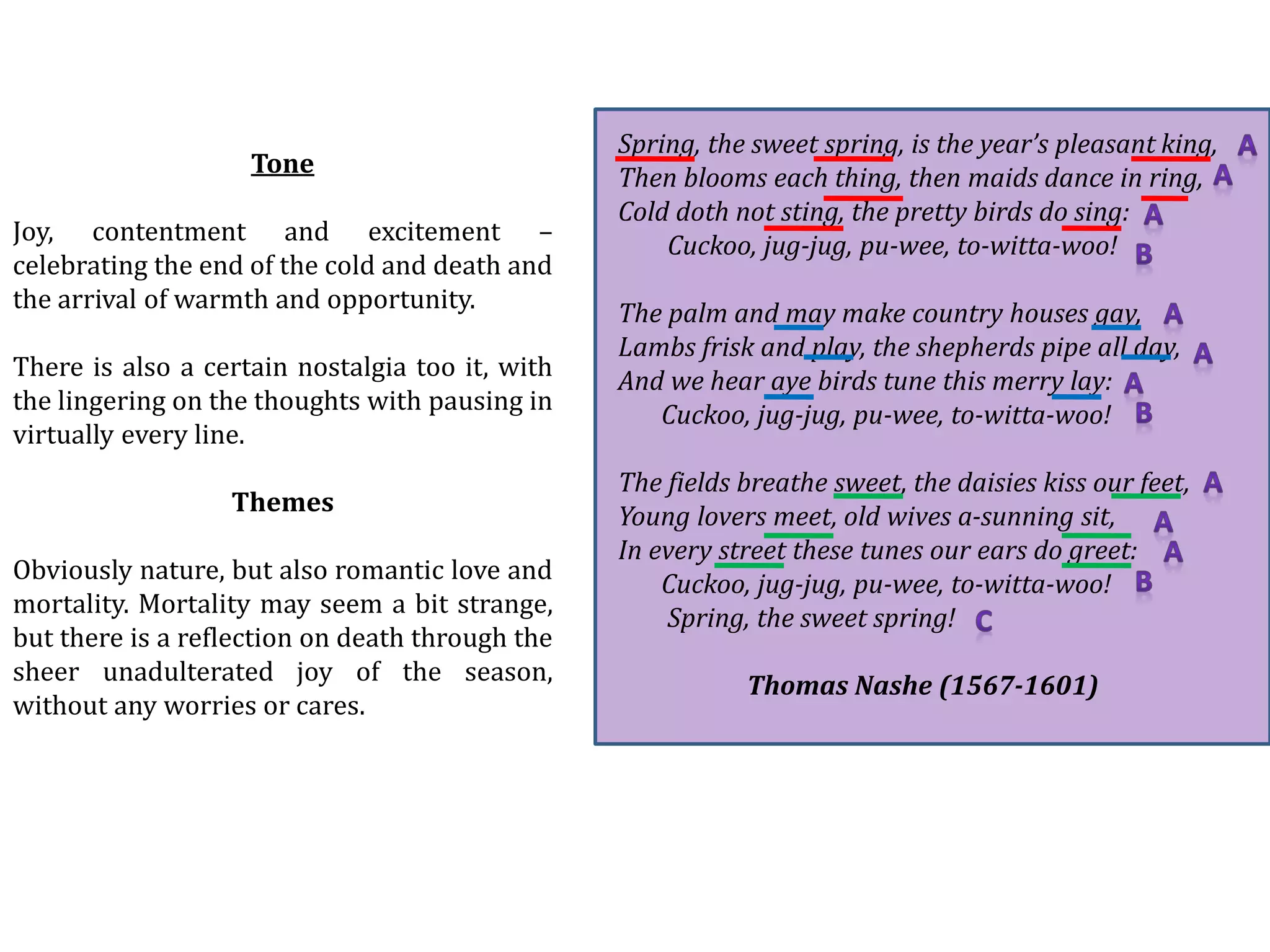The poem celebrates the arrival of spring through vivid imagery and auditory descriptions. It depicts a scene of natural rebirth and human celebration as maids dance, lambs play, and birds sing their cheerful songs. Each stanza focuses on a different sense: visual imagery in the first, auditory in the second, and olfactory in the third. Throughout, there is a tone of joy and nostalgia, reflecting both the pleasures of spring and memories of youth. The simple rhyme scheme and repetition of the bird chorus create a sing-song rhythm that enhances the poem's cheerful and uplifting mood.
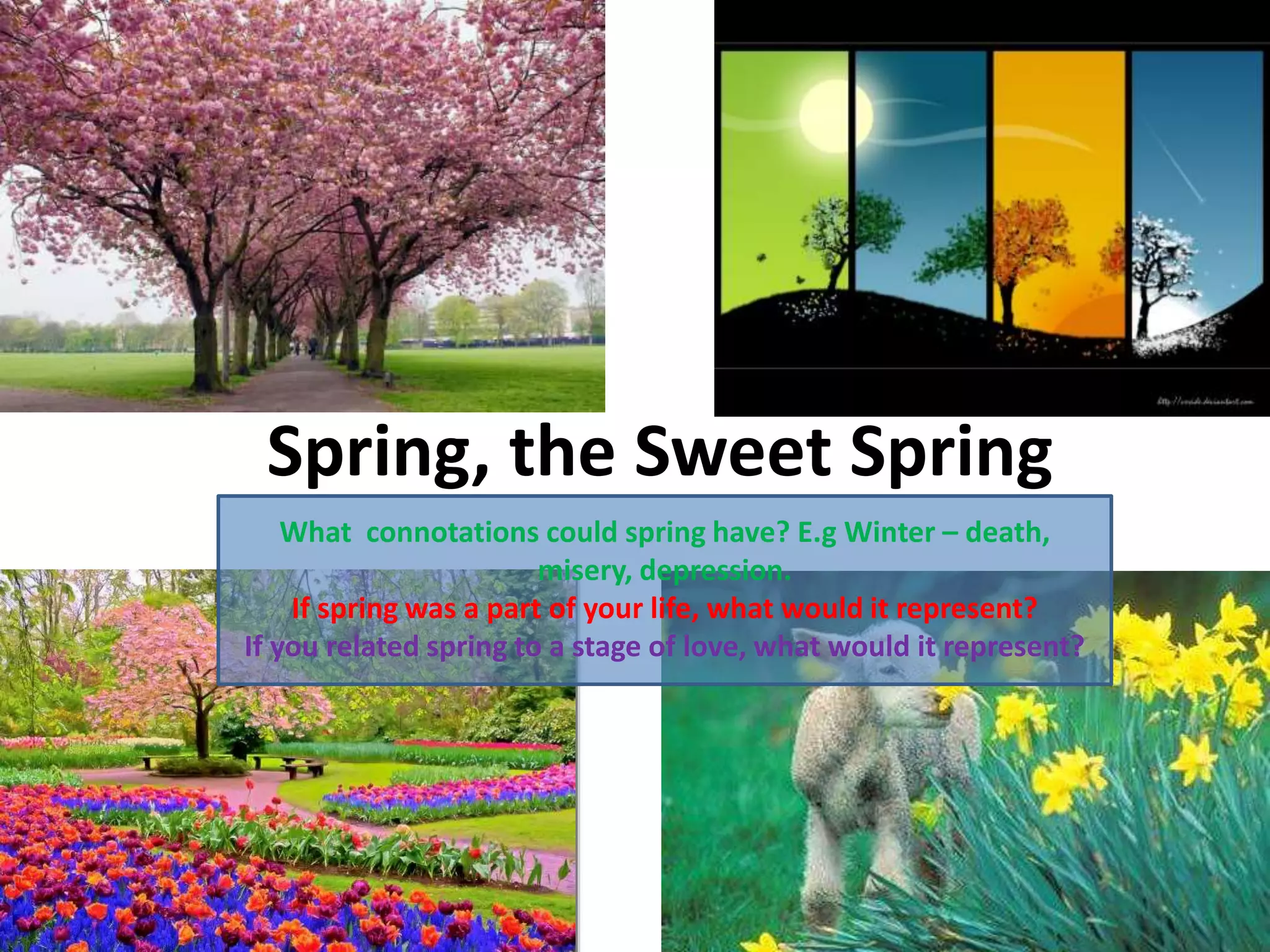
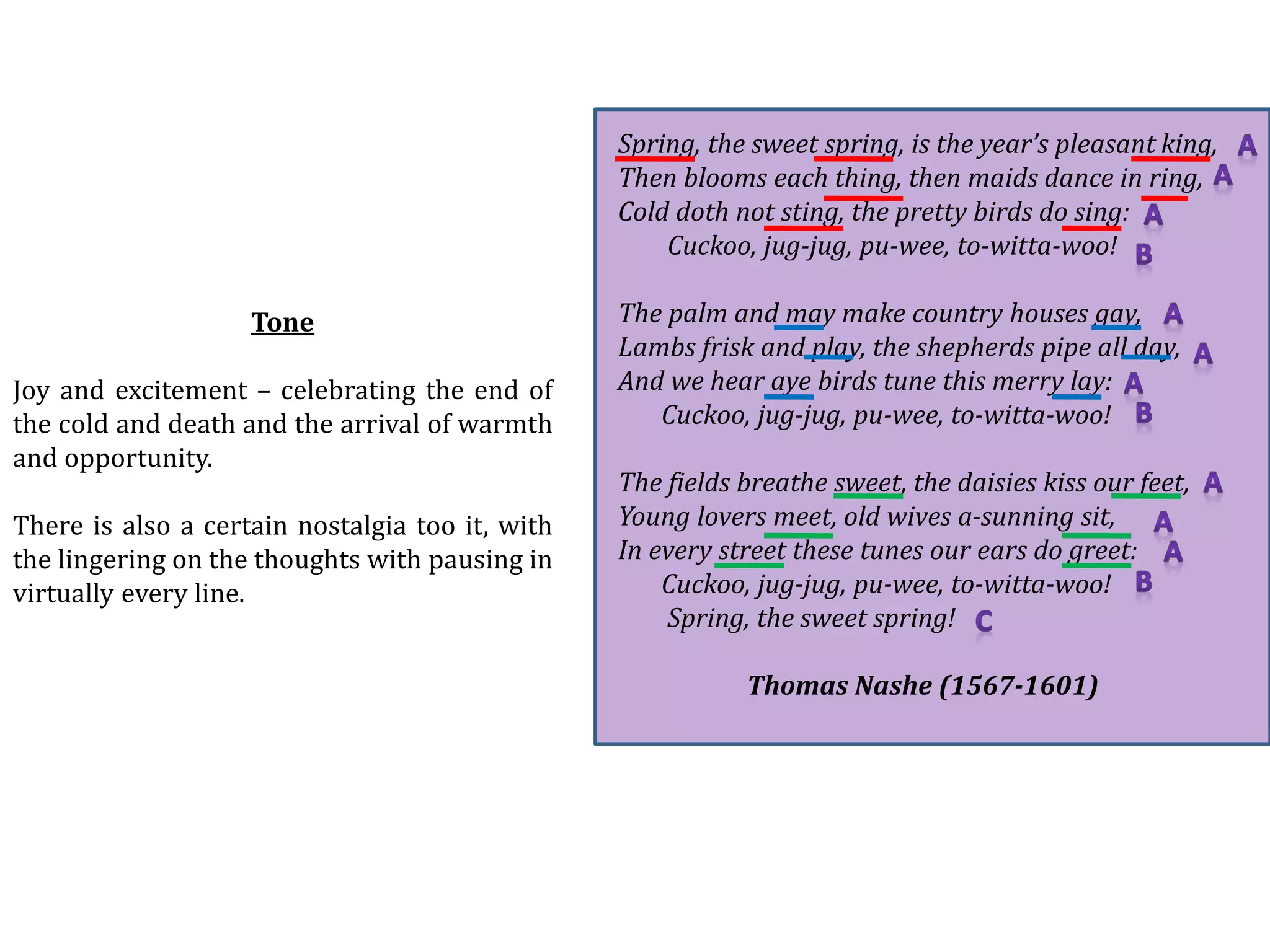
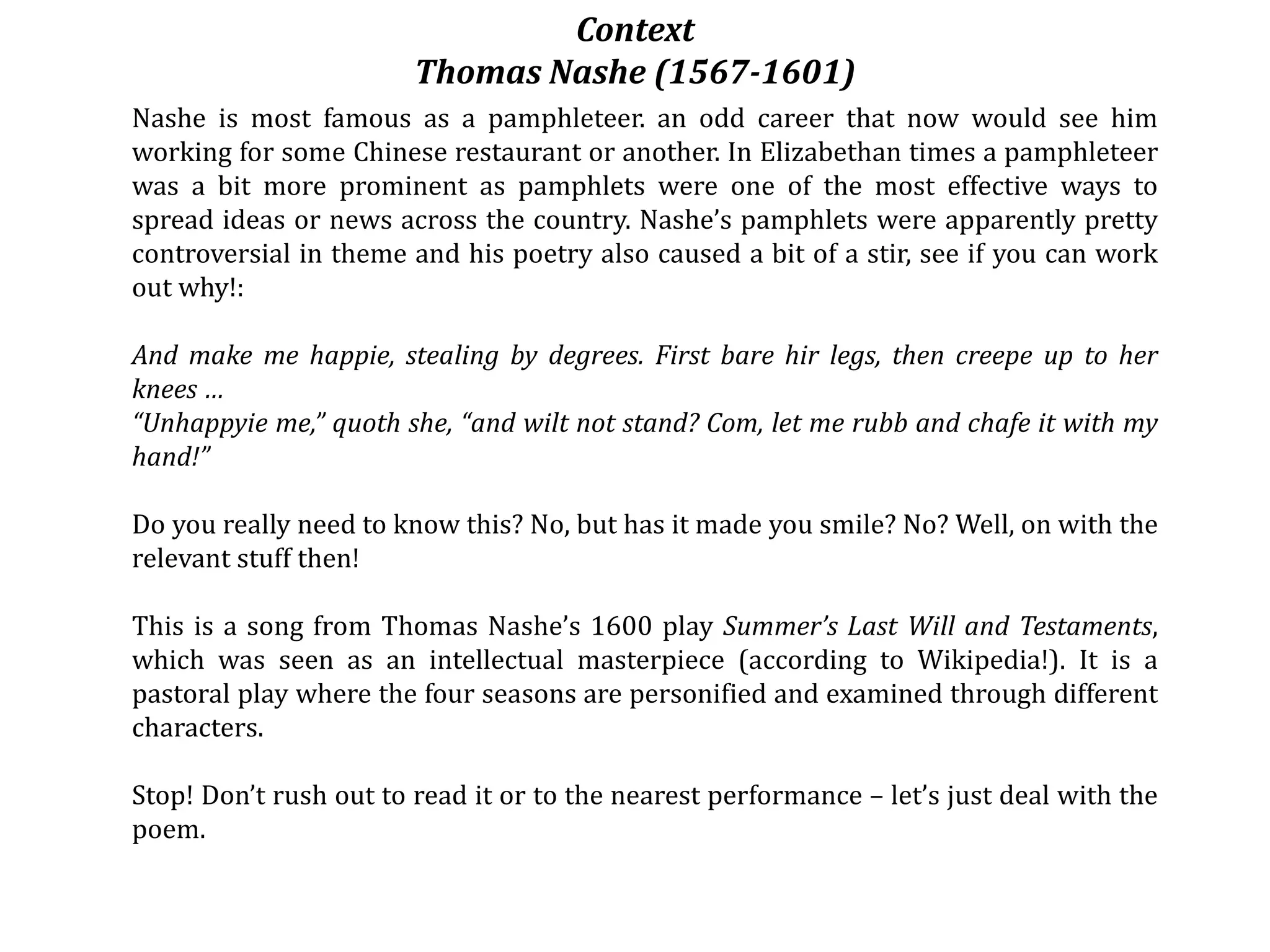
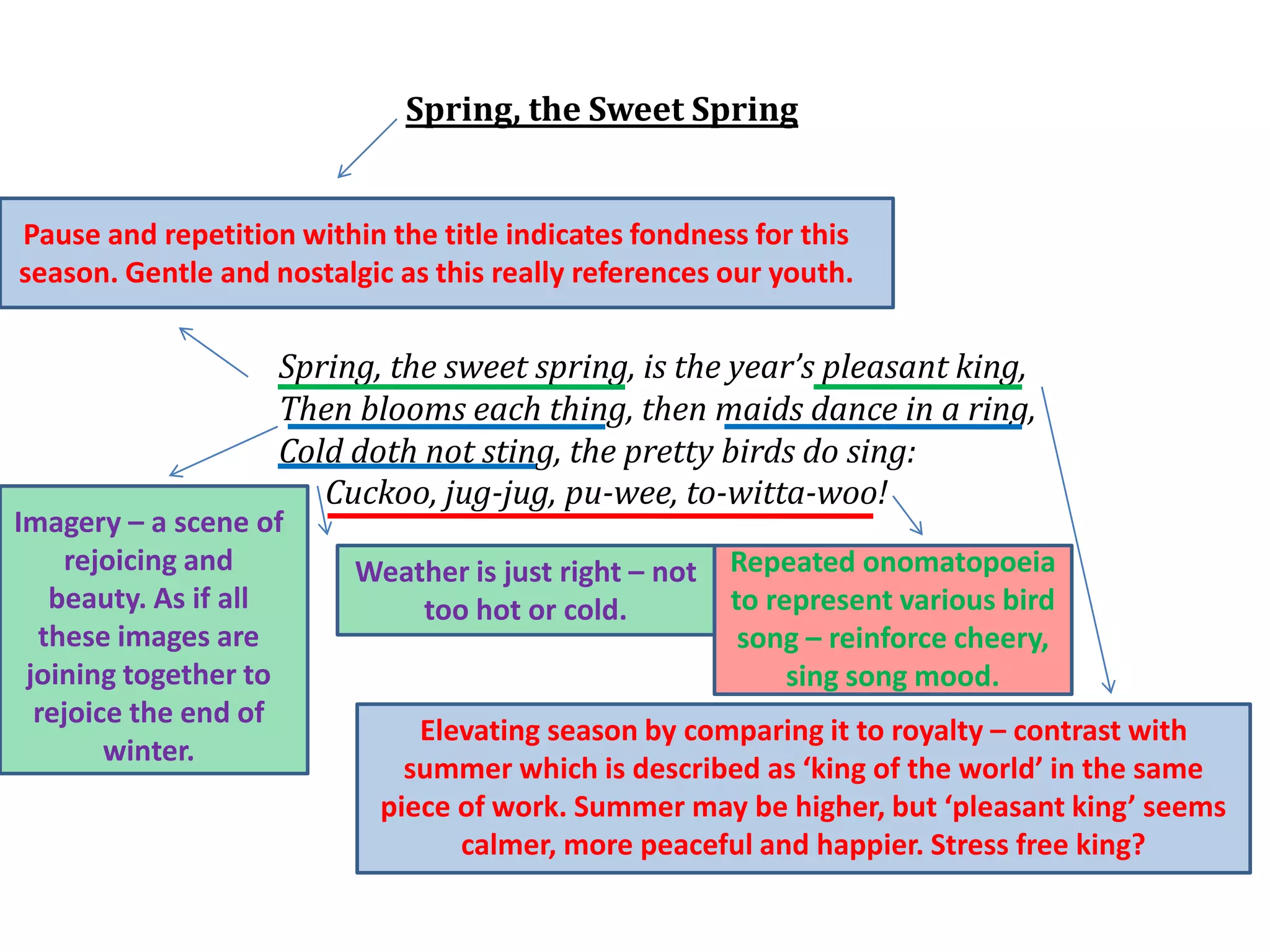
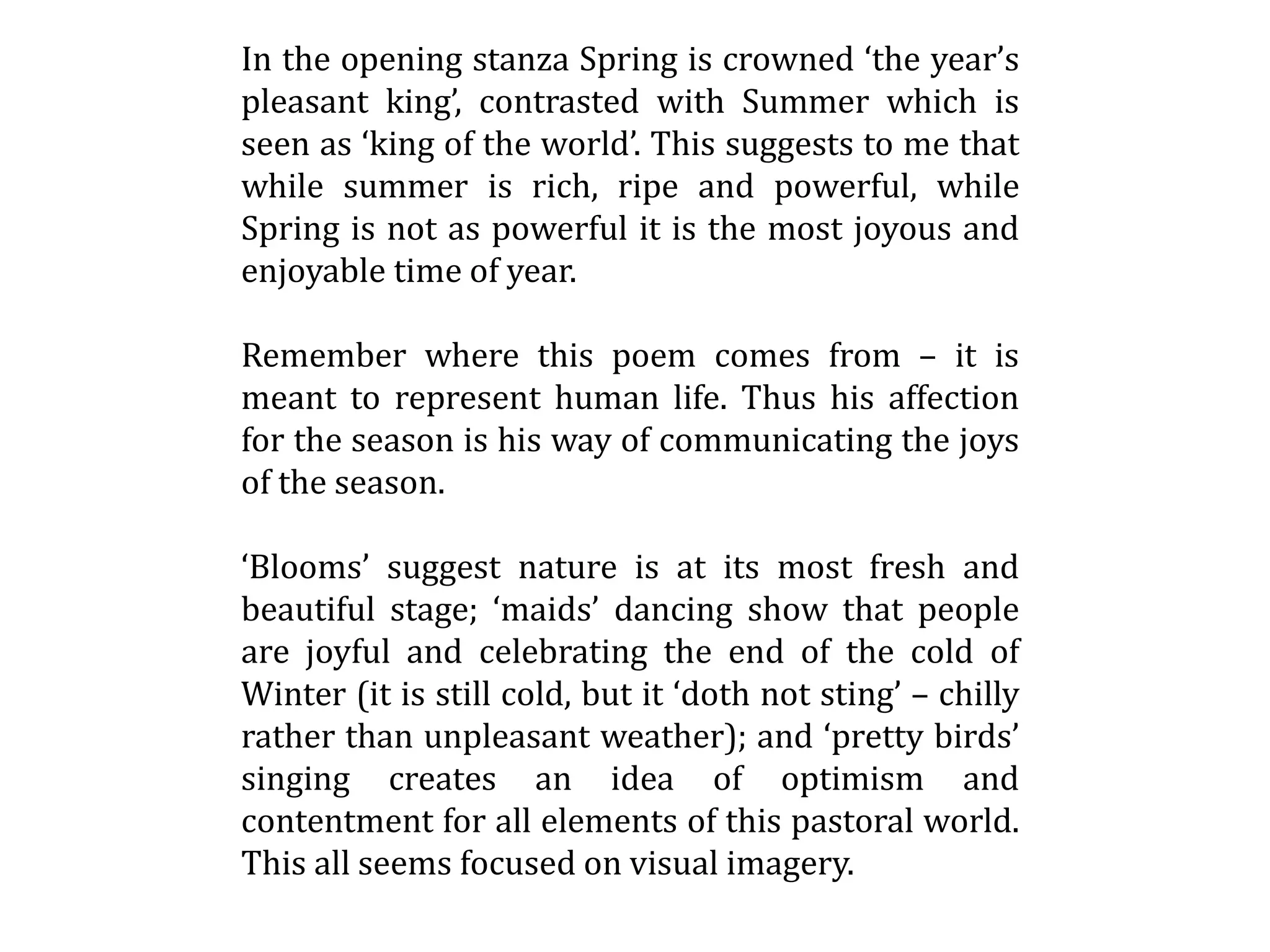
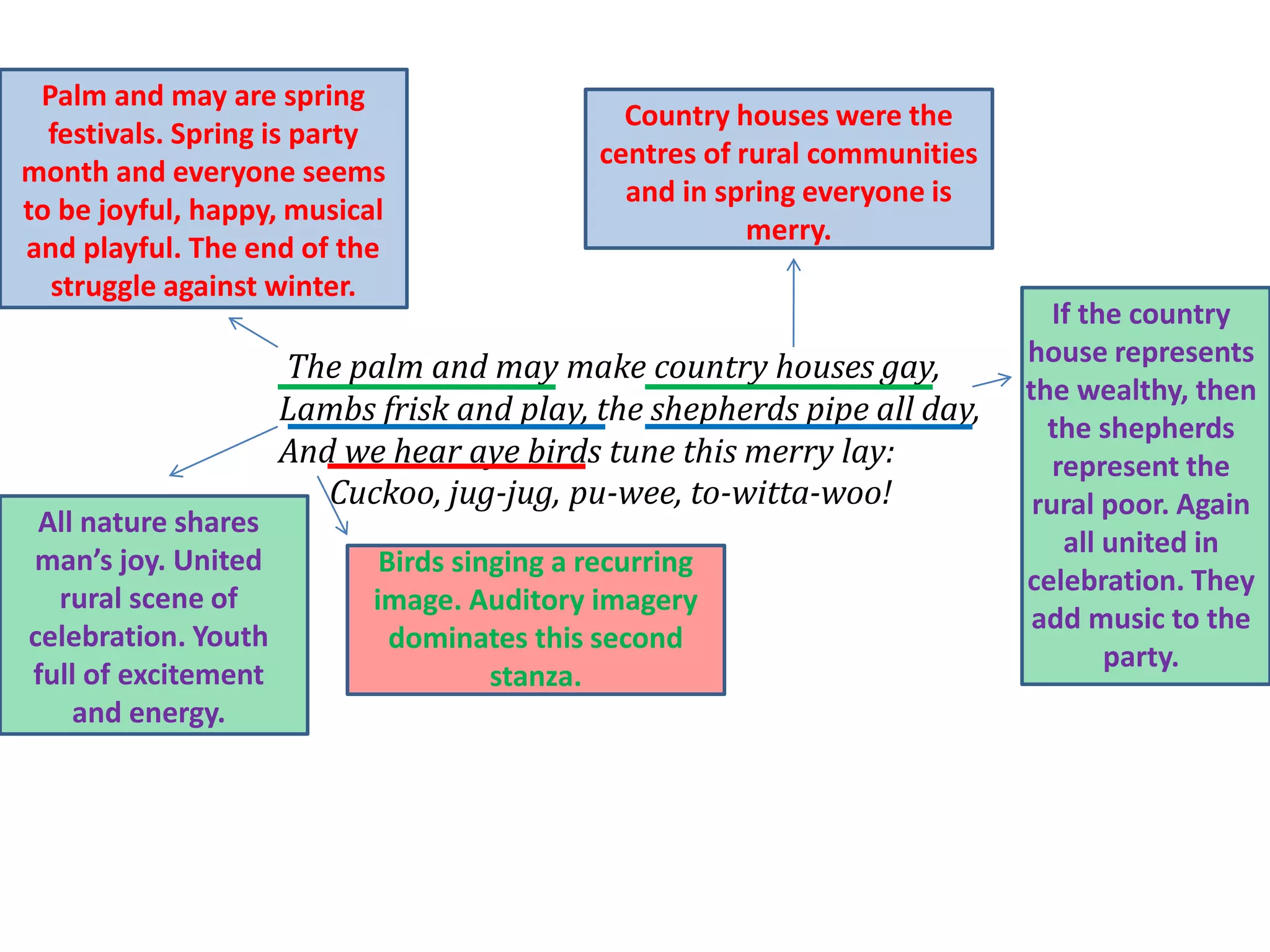
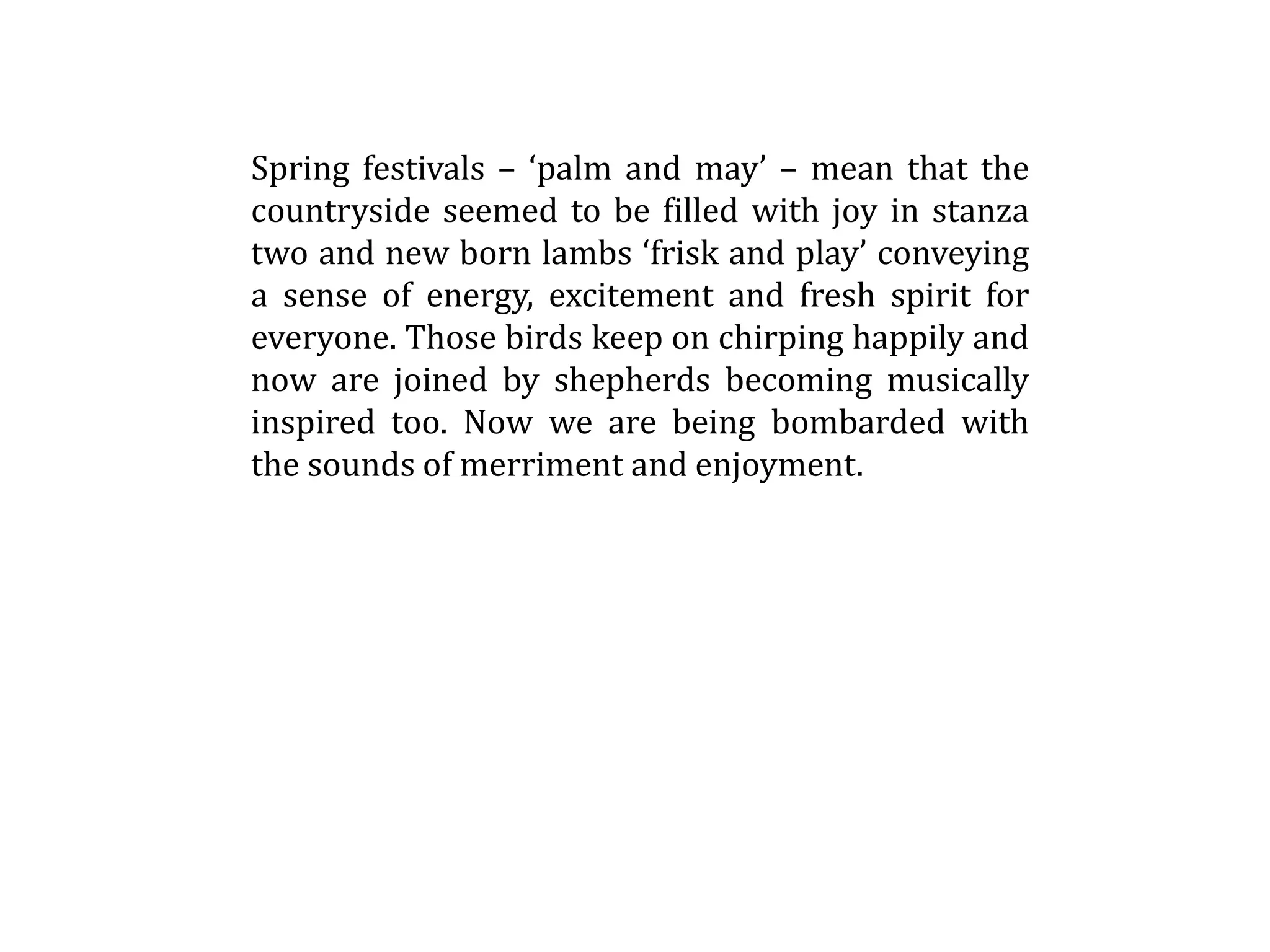
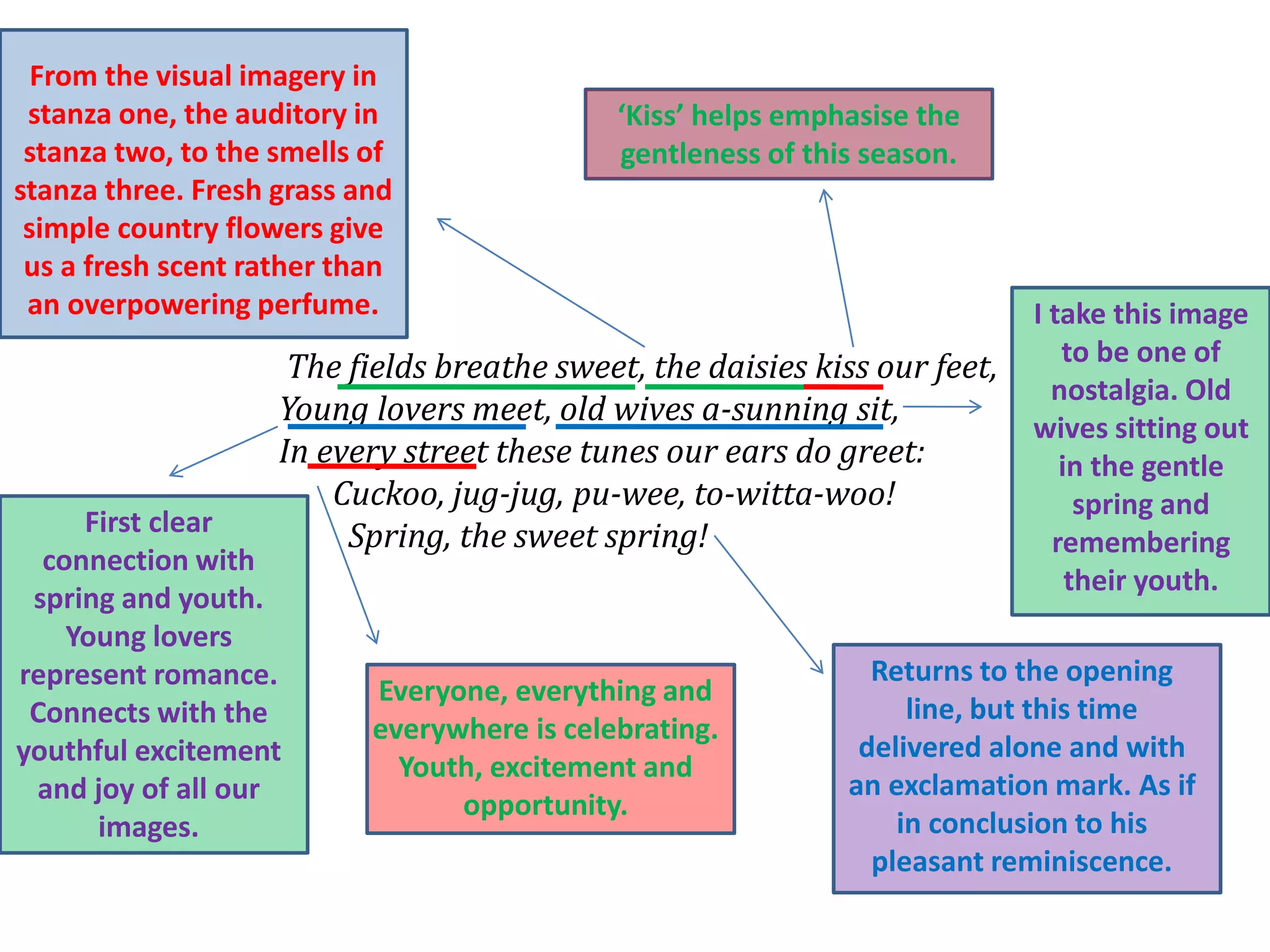
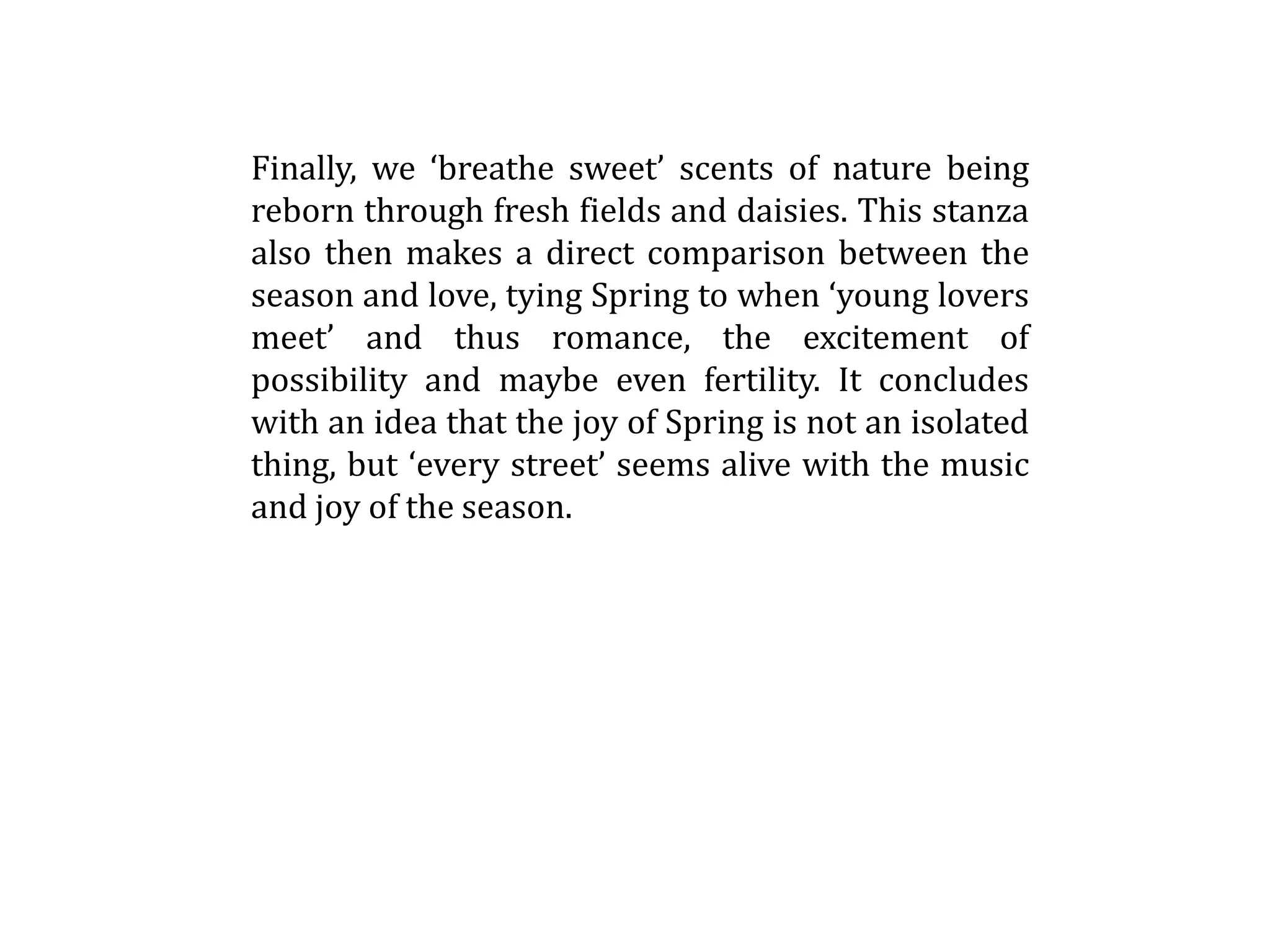
![Language and techniques
Here it is all about imagery.
Don’t be fooled into thinking that imagery is just about making you
imagine how something looks, but it is about immersing you into the
writer/poet’s world.
Rich natural visuals of the ‘blooms’ on the trees, symbolising rebirth
and beauty, are met with joyous human emotion expressed through
the ‘maids [who] dance’ and the sounds of ‘shepherds pip[ing]‘ and
birds singing showing the harmony between all aspects of the
countryside. We are even challenged to imagine the freshness of the
air when the ‘fields breathe sweet’.
Mention the repetition of the final line in each stanza. Onomatopoeia
makes us almost sing in the voices of the different birds (cuckoo,
nightingale, lapwing and owl) as we read the poem and conveys the
joy that this poem expresses throughout and ties to the season.
You’ll sound very clever if you can also integrate sensible comment
about the use of pathetic fallacy. ‘Young lovers meet’ ties the idea of
the natural freshness and excitement of Spring with the first emotions
of love or romance.](https://image.slidesharecdn.com/springthesweetspring-150111063344-conversion-gate01/75/Spring-the-sweet-spring-10-2048.jpg)

